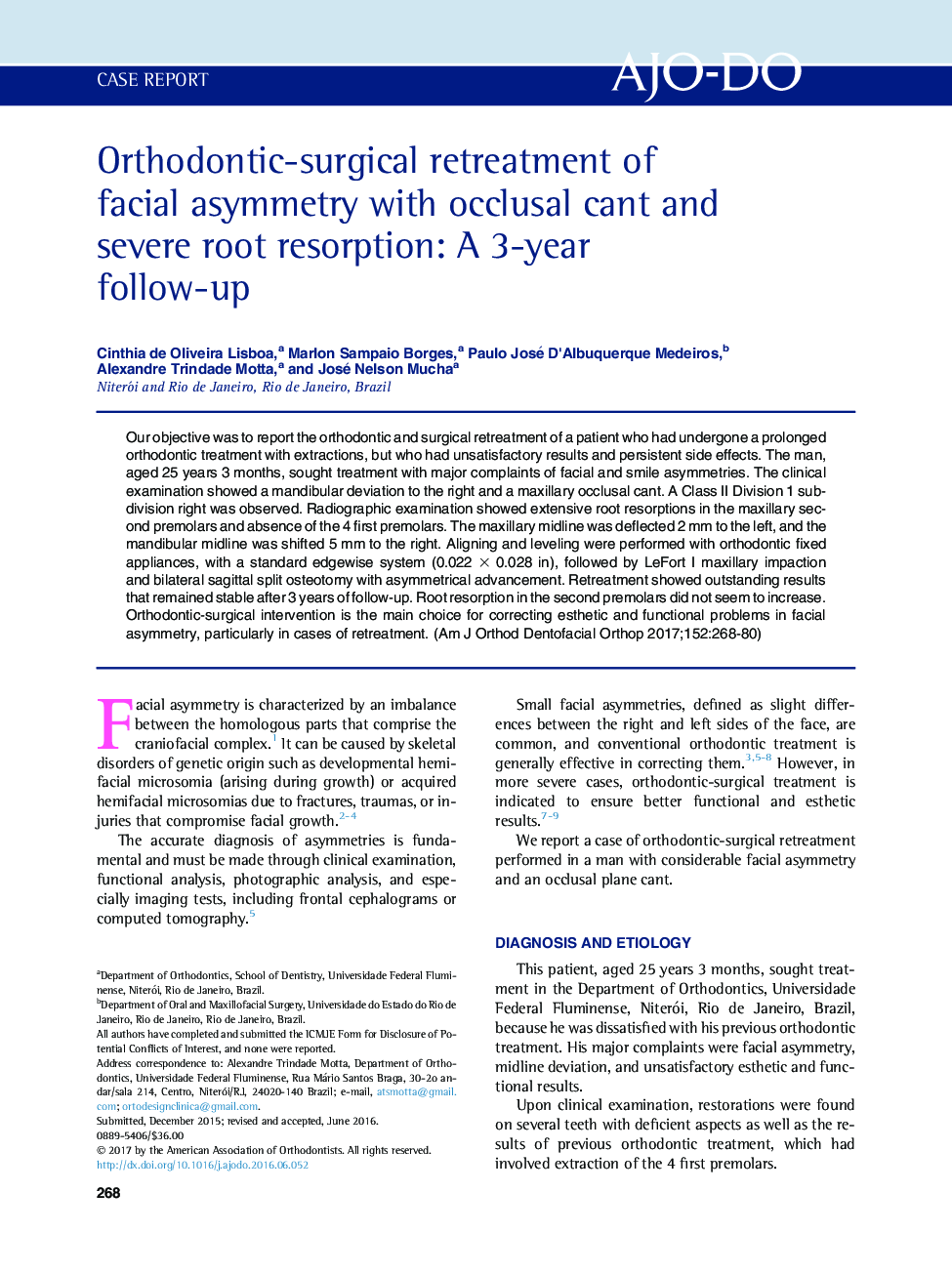| Article ID | Journal | Published Year | Pages | File Type |
|---|---|---|---|---|
| 5637425 | American Journal of Orthodontics and Dentofacial Orthopedics | 2017 | 13 Pages |
â¢Retreatments are usually more challenging than conventional treatments.â¢Previous treatment biologic impact influences the new treatment plan.â¢Compensation with extractions can jeopardize future ortho-surgical treatment.â¢Orthognathic surgery can reduce treatment time and the risk of root resorption.â¢Differential maxillary impaction is predictable and stable to correct occlusal cant.
Our objective was to report the orthodontic and surgical retreatment of a patient who had undergone a prolonged orthodontic treatment with extractions, but who had unsatisfactory results and persistent side effects. The man, aged 25 years 3 months, sought treatment with major complaints of facial and smile asymmetries. The clinical examination showed a mandibular deviation to the right and a maxillary occlusal cant. A Class II Division 1 subdivision right was observed. Radiographic examination showed extensive root resorptions in the maxillary second premolars and absence of the 4 first premolars. The maxillary midline was deflected 2 mm to the left, and the mandibular midline was shifted 5 mm to the right. Aligning and leveling were performed with orthodontic fixed appliances, with a standard edgewise system (0.022 Ã 0.028 in), followed by LeFort I maxillary impaction and bilateral sagittal split osteotomy with asymmetrical advancement. Retreatment showed outstanding results that remained stable after 3 years of follow-up. Root resorption in the second premolars did not seem to increase. Orthodontic-surgical intervention is the main choice for correcting esthetic and functional problems in facial asymmetry, particularly in cases of retreatment.
